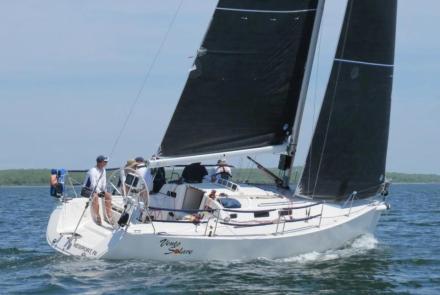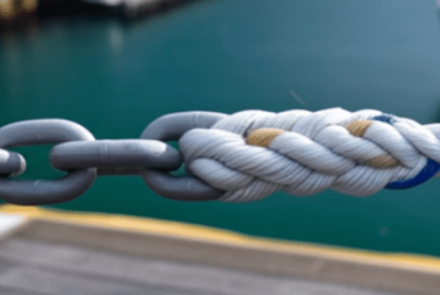Common Themes in Boating Accidents
CCA Safety Moment for September 2015
Chuck Hawley, San Francisco Station
When we think about boating safety, all of us can come up with a specific story, perhaps several, that previously taught us about the ocean, how sailboats perform, and how to avoid trouble. Frequently, these stories involved trouble of one sort or another, since the school of hard knocks provides a pretty effective education.
When I look at how to craft a safety message, it’s similar to a choice that I faced as a student of Economics: do I choose the macro economic approach, or the micro economic approach? Both are valid, but one deals with individual choices, incentives, and optimization, while the other looks at the masses and what their collective actions produce.
In marine safety, the “macro” view is encapsulated in an annual publication from the US Coast Guard called Boating Statistics, which is a compilation of boating accidents from the 50 states, District of Columbia, and trust territories. From this volume, we discover how many fatalities were reported in the previous year, and how those people died while boating.
US Sailing and CCA have no part of this, other than, on rare occasions, one of their members becomes immortalized as a statistic in this document. But US Sailing and CCA do have a strong interest in investigating individual boat accidents that occur while people sail, generally in a race of some sort. While only 3.5% of the boating fatalities in a given year are on sailboats, the very rareness of these incidents grabs our attention as we ask, “Why in the hell did those guys die?”
Analyzing any one incident is like looking at a traffic accident and trying to extrapolate how to make cars safer. Each accident has a string of decisions, and conditions, and failures that conspire to wreck a nice day on the ocean. More data leads to actionable results.
In the last five years I have been involved, at one level or another, in the investigation of nine accidents in which 20 people lost their lives. In some cases, I was the lead author in the investigation, while in other cases I was asked to recommend sailors to serve on the incident panels. The vessels and the events and the locations that were investigated are familiar to many active sailors: WingNuts, Aegean, Low Speed Chase, Rambler 100, The Dauphin Island Race[1], Vestas Wind, Uncontrollable Urge and others. In each case, without trying to pin the blame on an individual, the investigators tried to uncover what happened and how a similar incident could be avoided in the future.
So, in some ways, our micro view of each accident aggregates into a macro view of sailing safety. Common elements show up in many of these accidents, regardless of whether a 14’ dinghy was involved or a 100’ ocean racer. Without rehashing the lengthy stories being each of the incidents, although the reports make excellent reading and can be found on the US Sailing web site under Safety, let’s examine the common themes of these 12 incidents.
Stability: in five out of nine incidents, vessels either lost stability or, once inverted, stayed inverted. In some cases, boats suffered structural failures that caused the inversion; while in other cases the vessel simply turtled and stayed upside down. Three lives (and possibly four) were lost because the sailors could not escape from being underneath the vessel, and drowned.
Life Jacket Performance: We understand what happens when someone is accidentally thrown into the water and they are not wearing a life jacket; we “get” that they should have worn one. What is more difficult to understand is when someone drowns while wearing a life jacket, or when the life jacket is implicated in not preventing the death. In the majority of cases, buoyancy is good, and more buoyancy is better, but when sailors are trapped underwater, buoyancy can be a killer. It can also be a killer when the device either malfunctions or does not operate like the wearer expects.
Navigation: Four of the incidents involve a collision with an island. This led to the deaths of half of the sailors in these incidents because of the rough coasts and high seas that accompanied the groundings. All four islands that were involved were shown on paper charts, but the electronic depiction of the islands varied in, what, believability? Obviousness? Apparent dangerousness?
Four skippers and/or navigators chose to sail close by obvious navigational hazards, and in two cases, suffered incapacitating failures just at the wrong moment that led to the loss of the boat. Islands, especially lee shores, are not forgiving and make picturesque but potentially hazardous racing. And for those of us lucky enough to sail along the California coast, it’s been described by one experienced sailor as a “800 mile lee shore”.
High Tech Designs: At the risk of sounding curmudgeonly, five of the nine incidents involved boats that could be considered “high tech” or perhaps “radical”. Four of the five were constructed primarily of carbon fiber. Two of the boats had canting keels. All five had some aspect of being extreme, either relative to the time in which they were built, or continuing to this day. So what is the sport to do if we see a trend of newer, high tech boats, built of exotic materials that are ending up associated with sailing incidents?
Probably nothing. Each time we have a slew of failures (the 1979 Fastnet and the 1980 Kauai Race come to mind), there’s a case made for either outlawing the boats that failed, or at least giving them such a stiff penalty that they’ll never be competitive. Cal 40s probably faced similar condemnations (except they had very few failures on which to base the condemnations) in the late 1960s, and lo and behold, they have proven to be excellent sea boats. All of us tend to draw a line of our desired slope through a single data point. “My baby slept through the night, so therefore that will happen tomorrow night” sayeth the optimistic parents. Alas, new parents, a single night doth not guarantee for sweet slumber in the future. But when three rudders fail, spectacularly, in a single long distance race, on a relatively new class of boat, we can arrive at the conclusion that we have a problem, and a problem that is, in fact, solvable (Kauai Race, 1980).
So, examine the macro data in the Boating Statistics publication. There’s good meat there, mostly about people in small powerboats who failed to comprehend that drowning was a possibility. But also spend some time reading the details of how sailors have died, or lost their vessels, and what they might have done differently to avoid situations involving low stability, misunderstood life jackets, navigational mistakes, and inadequate designs. There are lessons to be learned in each incident.
[1] US Sailing did not investigate the Dauphin Island Race, but did cooperate with the Coast Guard on their investigation.




